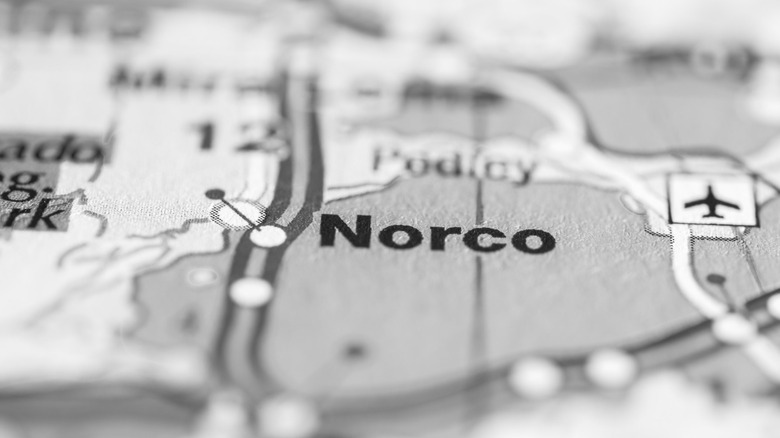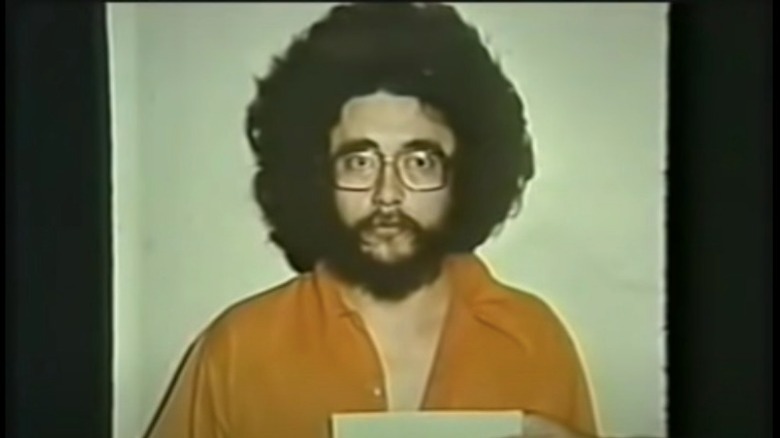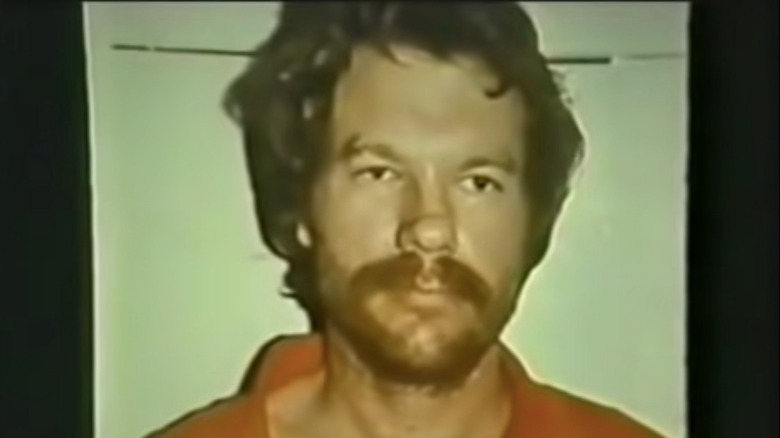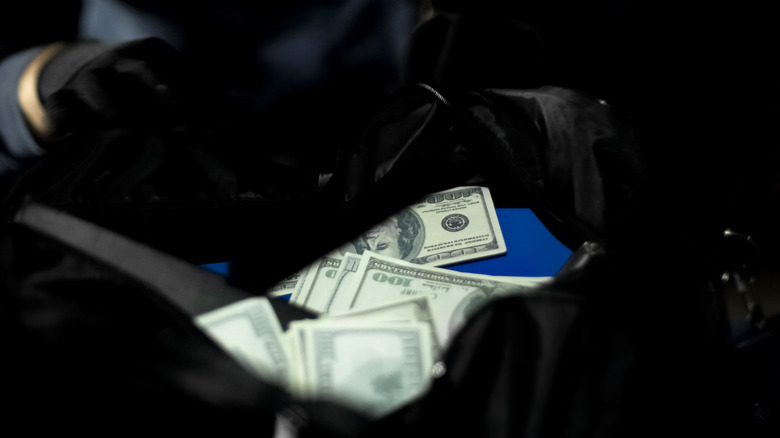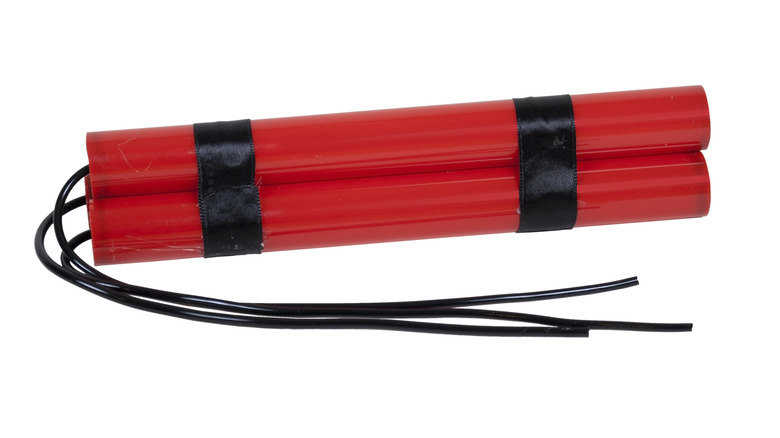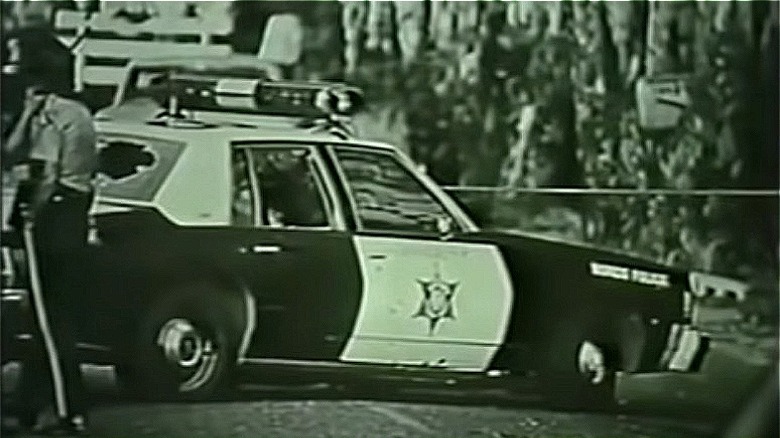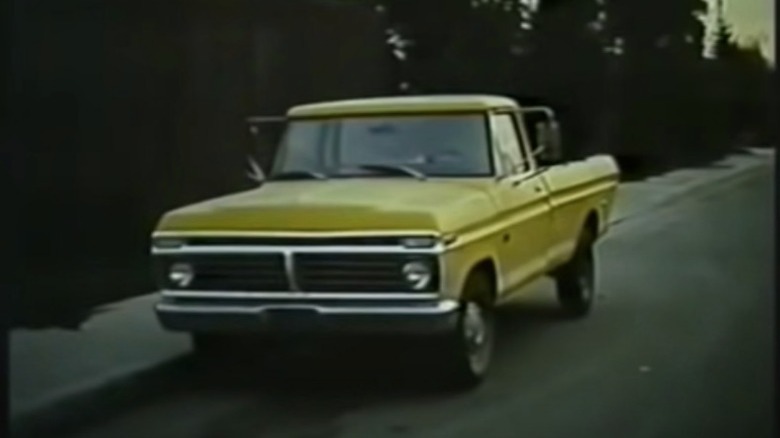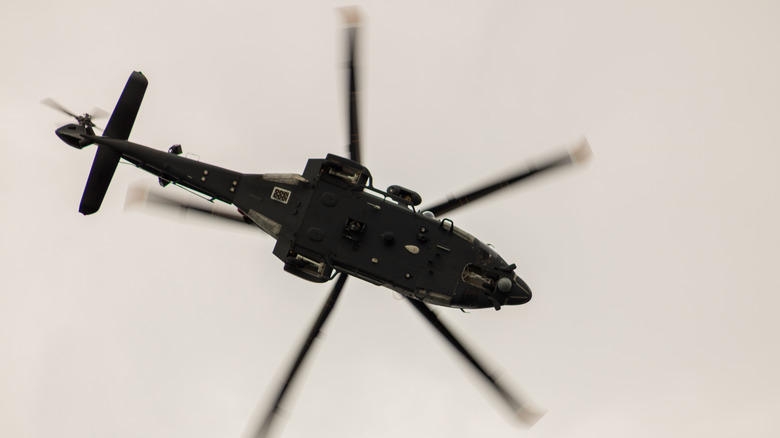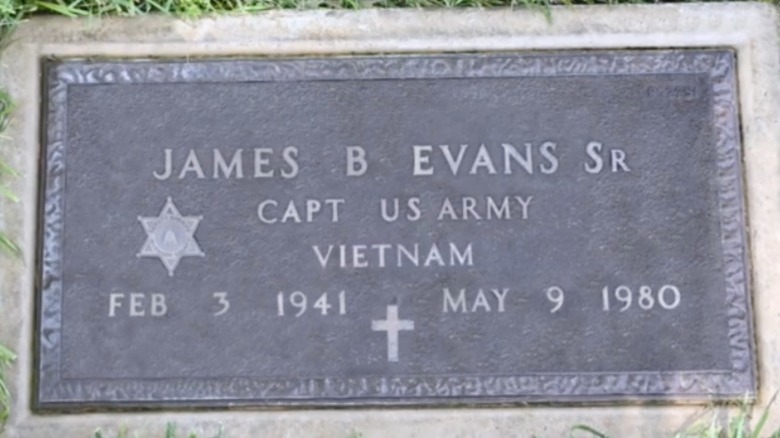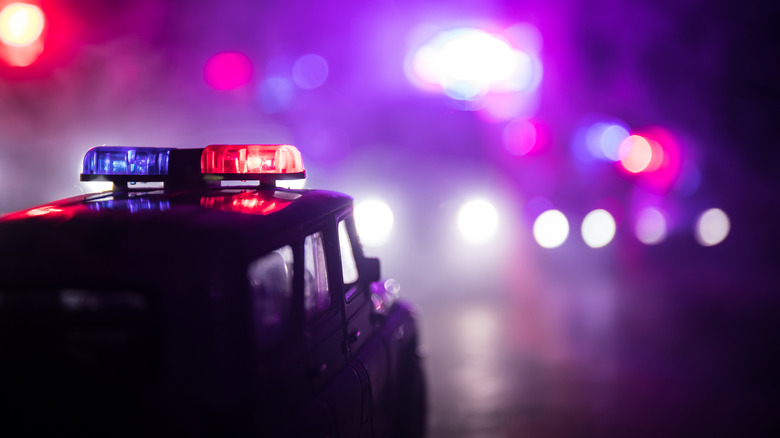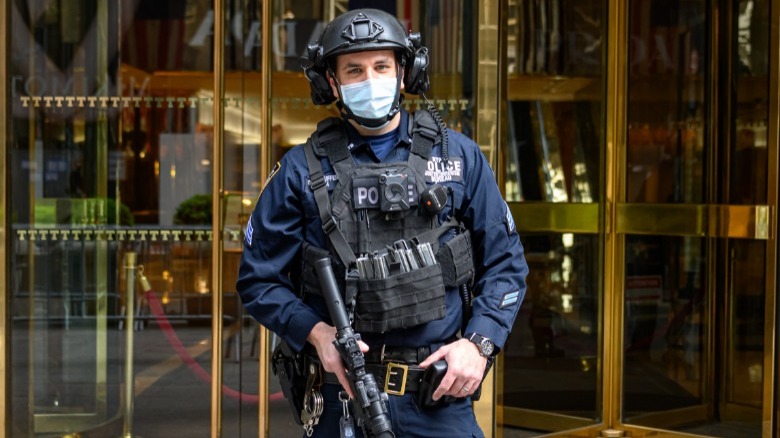The Norco Shootout: The True Story Of America's Most Notorious Bank Robbery
In 1963, the Los Angeles Times wrote that its city was, "Getting title of bank holdup capital." By the 1980s, however, Los Angeles had fully earned the moniker of "the bank robbery capital of the world" (via Crime Reads). This wasn't hyperbole. National bank robberies had increased by 50% from 1975 to 1980, with up to a third of these occurring in the Los Angeles area (via Norco '80). One of the main reasons for this was LA's thousand-mile freeway network, which allowed crooks to make their getaway very quickly, especially if their bank was near an on-ramp.
This trend would continue into the '90s, with the region's approximate 3,500 bank branches robbed 17,106 times between 1985 and 1995. Most of these were dismissed by the FBI as "just another day in L.A" (via Los Angeles Times). But the infamous Norco bank robbery in 1980 was quite different. In fact, it would change American policing forever.
On the afternoon of May 9, 1980 five heavily armed men stormed a branch of the Security Pacific Bank in Norco, California. When police arrived just two minutes later, the robbers made full use of their arsenal, firing hundreds of rounds from their powerful assault rifles. When it was over, 33 police vehicles would be damaged, eight officers would be wounded, and three people would be dead (via PoliceOne).
Here is the shocking true story of the Norco shootout, America's most notorious bank robbery.
George Smith — ringleader and ideologue
George Smith, 29, was the ringleader of the five-man team that entered the Security Pacific Bank. Smith had served two years in the U.S. Army as an artilleryman, and was sent to West Germany, where he worked with tactical nuclear weapons (via LA Mag).
After that, Smith worked as a maintenance man in Cypress, California. It was during this time that he met Chris Harven, a 27-year-old colleague who was exposed to George's anarchist ideas of overthrowing the government (via Behind the Badge/Irvine Police Department).
According to a former partner, Smith expressed an atheist worldview, insisting that he just could not believe in god (via Norco '80, chapter 3, 17:03). However, he would later become staunchly religious, swept up by southern California's Christian youth culture.
Smith's new religiosity began to focus on the Rapture, a prophesy about the second coming of Jesus Christ in which believers would reach heaven as Earth descended into violent chaos. Smith's apocalyptic beliefs were reinforced by his aforementioned experiences with tactical nuclear weapons, which convinced him of a likely nuclear clash between the United States and the Soviet Union (via LA Mag).
Smith's beliefs also turned him into a survivalist. He moved to Mira Loma with his friend Chris Harven, and together they hatched a plan to reject society, prepare for the apocalypse, and earn money by selling marijuana, which they cultivated from 300 plants growing in their residence (via Behind the Badge/Irvine Police Department). However, when the marijuana business failed to materialise, Smith hatched a new plan to make money quick — they would rob a bank.
George Smith's team
To realise his plan, George Smith and his main partner, Chris Harven, recruited three members to assist them, and the first to join were brothers Belisario "Billy" and Manuel "Manny" Delgado.
Just 17 years old, Billy was a truant with no fixed address. He would serve as the getaway driver. His older brother, Manny, 21, lived in Garden Grove and needed money to support his second child. Manny's role was to storm the bank with the others (via Behind the Badge/Irvine Police Department and Norco '80). It was also decided that Smith would act as the time-keeper.
Then there was Russell Harven, Chris' 26-year-old brother. Russell lived with his parents in Anaheim, some 35 miles from Mira Loma. Russell was also a father and needed money to pay child support.
None of five robbers had a criminal record beyond minor drug charges (via IPD, 01:30). This would be their first and final major crime.
The plan and execution
George Smith planned the robbery at 10314, 50th Street in Mira Loma (via Beyond the Badge/Irvine Police Department). Smith told police that the plan was all his, saying "I told them what to do in the bank. I cased the bank. I made the bombs. I did all that" (via Norco '80).
The preparations began about a week and a half before the robbery date. Smith visited the bank and memorised the layout, which would help the team get in and out of the bank within Smith's two-minute timeline.
Meanwhile, the men built an arsenal of weaponry that included shotguns, pistols, thousands of rounds and nine Armalite rifles, according to Norco '80. Particularly ambitious were the explosives. Working in his garage, Smith made several grenades and incendiary bombs that could be thrown by hand or fired from a shotgun. He also made an IED, which was designed to divert police from the bank.
With the guns and explosives secured, Russell Harven, Manny Delgado, and Billy Delgado would steal a van from the Brea Mall, just off routes 90 and 57. Their victim was Gary Heralla, the owner of a 1979 Dodge van. The three criminals stole the van and took Heralla with them, driving to Corona.
The final part of the heist's opening act was to plant the IED, which the men placed on gas mains at a building site south of Norco. When the bomb detonated and the diversion was in effect, the robbers would storm the bank.
Problem No. 1: the bomb doesn't explode, but the heist goes ahead
The men planted the bomb, lit the fuse, and waited for it to explode. However, the bomb failed to detonate. Without the diversion, the men would have to deal with the full force of Norco's emergency services, which would likely be reinforced by authorities from the local area. They decided to continue regardless, and they arrived at the Security Pacific Bank on Fourth and Hamner at 3:30 p.m. (via Beyond the Badge/Irvine Police Department).
Wearing parkas and ski masks, the men burst into the bank, which was busy with customers. Manny Delgado jumped onto the counter wielding a 12-gauge pump action shotgun while Smith roamed the floor with an HK91, barking orders. Chris Harven took the bank manager to the vault, where they retrieved $20,000 in cash. Billy Delgado, meanwhile, kept the van's engine running, ready to make a quick escape.
Sharon Dickens, an employee at the bank, remembered the scene, "We heard this tremendous noise... it was the four of them hitting the double doors at one time... I did attempt to push my silent alarm, but the suspect on the counter in front of me said, 'If any f**king alarms go off, the fucking bullets are gonna fly'." (via Norco '80).
Problem No. 2: the cops show and guns start firing
George Smith's plan was to be in and out of the bank within two minutes, and he made sure the men stuck to it, shouting "time!" repeatedly to keep his team fast and focused. However, even this was not quick enough, as the police had responded to a call from across the street and had a patrol car close by (via Norco '80).
As Smith and his men left the bank with $20,000, Deputy Bolasky arrived at the scene. The bank robbers opened fire and forced Bolasky into the street, where his patrol car collided with a passing vehicle (via Beyond the Badge/Irvine Police Department).
Then, Bolasky exited his car and engaged in a firefight with the men, firing his pump action shotgun four times at a distance of 25 yards. The fourth round hit Smith in the groin and Billy Delgado in his neck, paralysing Billy instantly.
With their driver all but dead at the wheel, the robbers' van crashed into a fence, at which point the remaining men burst out the side and fired a huge volley at Deputy Bolasky, hitting his vehicle 42 times and inflicting several wounds on the deputy, including a severed vein in his arm that bled profusely.
Shortly before Bolasky was injured, Officer Andy Delgago (no relation to the brothers) arrived at the scene and fired upon the robbers. Soon after, Deputy Chuck Hille appeared and immediately came under fire. Both men were outgunned by the suspects. However, despite the danger, Hille managed to reach Bolasky, stem some of the bleeding, and take him to Corona Community Hospital.
The chase begins
With the two other officers at the hospital, Deputy Delgado was left to fend for himself (via Press Enterprise). He continued to fire at the remaining suspects, but was too far away to stop them.
Deputy Delgado observed the men steal a yellow pickup truck (pictured), which they loaded with a cache of guns and ammunition. Chris Harven drove the truck with George Smith in the passenger seat and Manny and Russell standing in the bed. As Harven drove, the others defended the vehicle.
The men drove north, opening fire on Deputy Delgado as they passed him. Just four minutes had passed since the bank robbery. Billy Delgado was dead, a cop was badly injured and the $20,000 was left behind. Alas, this was just the opening act of the Norco shootout.
The bank robbers continued north with reckless abandon, running lights and hitting various cars. Whenever police units got near, the men would fire aggressively and accurately, hitting numerous officers and members of the public. Deputy Rolf Parks, whose head was grazed by a bullet, remembered the intensity of that day, "As soon as I got round the corner... they're blasting the crap out of me and I'm not even near them, they're 50 to 100 yards down the road." (via Norco '80).
Smith told interrogators that they "weren't trying to kill" police officers, explaining that they were trying to "hit the engines on the police vehicles to stop them," yet, as explained in Norco '80, they injured seven police officers and a 12-year old boy riding his bike.
The robbers shoot down a helicopter
When the bank robbers saw a police helicopter on their tail, they resolved to stop it. Smith explained, "We figured if we could stop the helicopter, we could get away, cos we figured that was what was keeping everybody else hanging on." (via Norco '80).
The gunmen's semi-automatic rifles made quick work of the helicopter's fuselage, forcing it to land before it fell out of the sky. This remarkable development in the chase caused the local airport to close, with authorities fearing that the men might shoot civilian aircrafts.
In all of the adrenaline and chaos, the gravity of the situation dawned on Deputy Rolf Parks. "I realised... I'm probably in the biggest law enforcement chase there ever was, and I'm in the unit in front chasing these guys," he said (via Norco '80). As Parks' vehicle broke down because of gunfire damage, he observed the robbers' yellow truck barrel towards Lytle Creek Canyon in the San Gabriel mountains.
Deputy Sheriff Jim Evans, the cop who gave his life
As the robbers tore through Lytle Creek Canyon, Deputy Jim Evans joined the chase. According to Norco '80, Evans was a Texas-born Green Beret and Vietnam veteran before he became deputy sheriff at the Riverside County Sheriff's Department. Described as a "real cowboy" who wore jeans, boots, and a cowboy shirt, Evans took interest in a woman named Mary Sweeney after she contacted the police about her abusive husband. He kept in touch with Sweeney, writing her letters. Eventually, they married and had a child.
One day when Evans had their child on his knee, he said, "You know Mary, some men don't never get to see their sons grow up." When asked what he meant, he answered, "I don't know, it's just a feeling." Evans was referring to his premonitions of being outgunned in the line of duty. According to Norco '80, he campaigned for police to be better equipped to defend themselves, yet nothing was ever done about it.
On May 9, 1980, Evans didn't let up in his pursuit along the ragged mountainside. Deputy Daniel McCardy was close behind him, trying to keep up. Then, Evans' car came to an abrupt halt, just behind a sharp bend in the road. Around the bend were the robbers, who had stopped their vehicle and assumed their positions.
As Evans hid behind his patrol car and reloaded his weapon, McCardy observed what happened, "All I could think was 'Don't get up,' but he got up... and he took a round in the right eye, which basically killed him instantly." (via Norco '80). Tragically, Evans' premonition had come true.
A stand-off in the San Bernadino mountains
Stunned by the horror of Deputy Jim Evans' death, Deputy McCardy attempted to gather himself. However, the gunmen were now focused on him, showering his patrol car with bullets every time they saw movement (via Norco '80).
Fortunately, McCardy had much more than a .38 revolver to defend himself with. On the seat of his car was a fully automatic M16 that he had retrieved from his station's evidence room. McCardy got up and fired like hell, sending the robbers off into the woods.
As the sun set on Lytle Creek, the robbers began to feel the pain of their wounds. George Smith was bleeding out, "I was feeling really weak, I'd lost too much blood," he said, according to Norco '80. Meanwhile, the officers set up camp and waited for the morning to make their move on the remaining criminals.
The morning began easily, with officers and SWAT team members locating Smith and the Harven brothers with no resistance. However, Manny Delgado was shot dead by police when he was seen carrying a gun. He was shot four times, the second round killing him instantly.
With the death of Manny, the Norco shootout was finally over. But the legacy can be felt to this day.
The legacy of the Norco shootout
George Smith, Chris Harven, and Russell Harven were found guilty of first degree murder, as well as 45 counts of attempted murder, assault, armed robbery, kidnapping and use of explosives. They were each sentenced to life without parole (via The Desert Sun).
Today, most people outside of Norco have forgotten about Smith and the Harven brothers. But their actions on 9 May, 1980 reverberated through U.S. law enforcement. Immediately after the incident, the San Bernardino Sheriff's Office purchased a raft of weaponry, including 36 automatic firearms and even an M60 machine gun for a departmental helicopter (via The Press Enterprise).
This shift in firepower became federal law in 1997, when President Bill Clinton inaugurated the 1033 program, which enabled the Department of Defense to send military-grade equipment to police forces across the country (via Salon).
The terrorist attacks of 9/11 followed four years later, stirring even greater distrust and aggression. The NYPD police union leader Patrick Lynch said, "Every patrol car should be a mini counter-terrorism unit with heavy weapons, ballistic vests and helmets." (via Salon). Then there was the shooting of Michael Brown and the consequent unrest in Ferguson in 2014, which saw heavily armored military vehicles deployed in the streets to disperse unarmed protestors.
While some may be disturbed by these trends, experts in law and weapons such as Massad Ayoob believe they are necessary, "Norco was a slap in the face that awoke California to the fact that heavily armed, coordinated groups of deadly opponents were a fact of life," he wrote in an article for Hendon Media Group (via Salon), adding that "Norco... altered police training and the police arsenal for the better."
